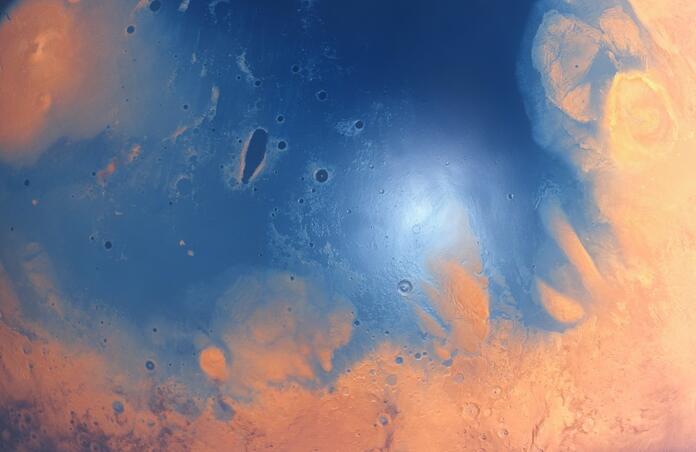Martian H2O Inventory During Early Formation Equivalent to a 307 m Surface Ocean

Since 2000, evidence for Mars having contained liquid water on its surface has been well documented, with the extent to which this has been the case still being a debate today. During the early stages of planetary formation, the terrestrial planets were subject to a heavy asteroid bombardment. However, since this discovery, it has been debated whether these were the origin of volatile compounds, substances that are readily vapourised, on these planets. This would include water.
On the 16th of November 2022, a study by Ke Zhu et al analysed a series of 31 meteorites of Martian origin to determine the properties of the material 4.5 billion years ago. Unlike Earth, Mars has no tectonic activity, which means that the properties and composition of material is preserved over tremendous timespans, as they are not erased by shifting tectonics. Hence, the samples used act as a reflection of their composition at the time.
These samples contained traces of material associated with carbonaceous (C-type) asteroids, which are characterised by being rich in volatile substances as well as possessing a low albedo. These would have acted as a major source of water on the Martian planet.
The study specifically analysed the prevalence of the chromium-54 isotope within the samples. This is because, this rare isotope of chromium is significantly more prevalent within the outer solar system, and so by considering the relative concentration of chromium-54 in the crust compared to the mantle, which would be shielded from the surface events, the team were able to estimate the total asteroid mass that would have impacted the planet during this period.
The study assumes the mass of the asteroids to be 10% water, regarded as the minimum boundary for C-type asteroids, to estimate the minimum mass of water these would have brought to the planet. The implications of their findings show that at this time, the Martian water inventory was equivalent to a 307 m deep ocean covering its surface. This, will have been a mixture of both the primordial water sources already present on the planet, combined with the additional ice brought in during the early bombardment. However, the exact contributions by each of these sources still remains unknown. Today, the equivalent of 20 m is stored as observable ice at the surface. The study estimates, that at minimum, an equivalent of 185 m is stored within subsurface deposits. The rest would have been lost in atmospheric escape.
Additionally, it has long been hypothesised that this bombardment has acted as a source of organic matter, such as amino acids, on the terrestrial planets. This study found this to be the case, as exotic organic molecules were found within their samples, suggesting that, at some point, Mars has had the capacity to harbour life.
However, the study notes that their estimations, primarily for the current unobservable water reservoirs, are subject to large fluctuations for small changes in the initial parameters. Of particular note is the true size of the primordial reservoir, as this remains an unknown. While their work in conclusively identifying C-type asteroids as a source of water and organic material is undoubtedly crucial in furthering our understanding of the early solar system, it is mentioned that further insight into the Martian hydrologic cycle is required before any more definite numbers may be set.
--
Journal Source: Ke Zhu et al, Late delivery of exotic chromium to the crust of Mars by water-rich carbonaceous asteroids, Science Advances, No. 8, 2022
Image Credits: ESO/M. Kornmesser/N. Risinger
